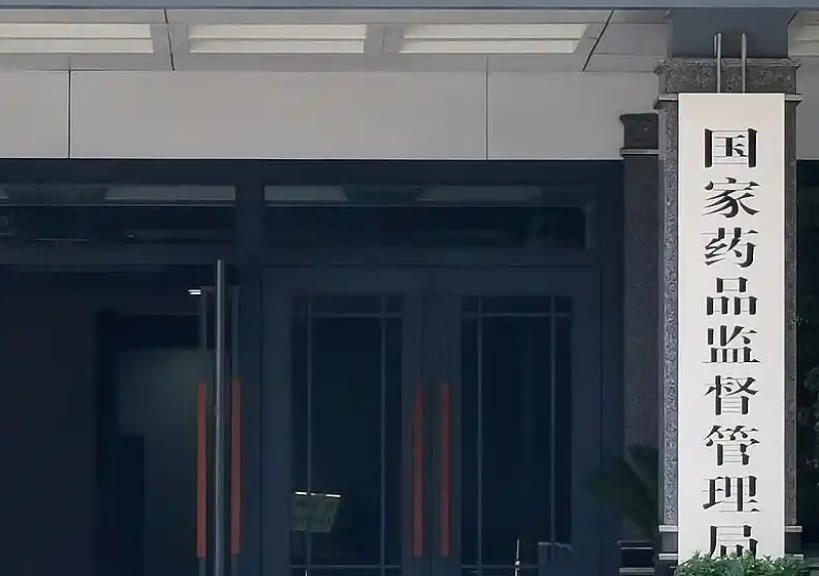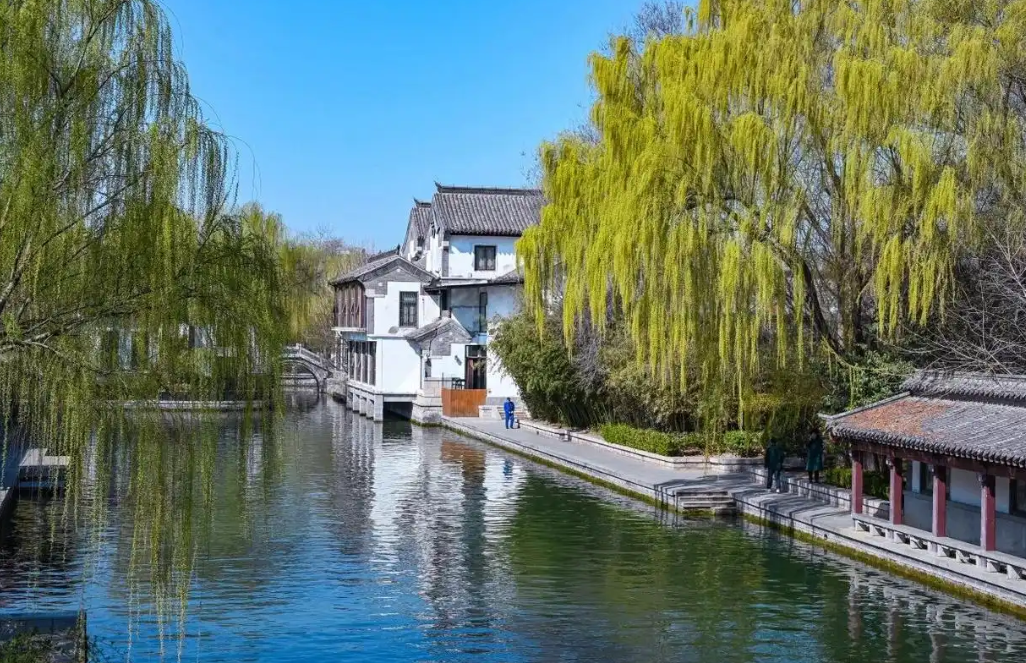1 蔡凤琳. 2014. 环境教育导向的生态旅游区环境解说系统构建: 以唐家河自然保护区为例[D]. 成都: 四川师范大学.
1 [Cai F L.2014. The construction of ecotourism scenic areas’ environmental interpretation system based on the environmental education: A case of Tangjiahe Nature Reserve[D]. Chengdu, China: Sichuan Normal University.]
2 董文渊, 赵敏燕. 2004. 竹林生态旅游环境解译系统的构建研究[J]. 竹子研究汇刊, 23(4): 51-55./s?wd=paperuri%3A%2862fc6e62de4fc0400ca68a9f06e8441d%29&filter=sc_long_sign&sc_ks_para=q%3D%E7%AB%B9%E6%9E%97%E7%94%9F%E6%80%81%E6%97%85%E6%B8%B8%E7%8E%AF%E5%A2%83%E8%A7%A3%E8%AF%91%E7%B3%BB%E7%BB%9F%E7%9A%84%E6%9E%84%E5%BB%BA%E7%A0%94%E7%A9%B6&sc_us=16663243176909633659&tn=SE_baiduxueshu_c1gjeupa&ie=utf-8
2 [Dong W Y, Zhao M Y.2004. A study on the construction of the environmental interpretation system for bamboo-forest ecotourism[J]. Journal of Bamboo Research, 23(4): 51-55.]
3
郭海健, 叶文, 赵敏燕, 等. 2015. 滇西北保护地解说牌示系统比较研究[J]. 中南林业科技大学学报: 社会科学版, 9(2): 69-73, 93.
doi: 10.14067/j.cnki.1673-9272.2015.02.015
3 [Guo H J, Ye W, Zhao M Y, et al.2015. The comparative study of interpretive panels system in northwest Yunnan protected areas[J]. Journal of Central South University of Forestry & Technology: Social Sciences, 9(2): 69-73, 93.]
4 郭剑英. 2011. 旅游景区旅游解说系统评价研究[D]. 南京: 南京林业大学.
4 [Guo J Y.2011. Study on evaluation of the scenic tourism interpretation system[D]. Nanjing, China: Nanjing Forestry University.]
5 国家林业局. 2015. 2014年森林公园建设管理状况[EB/OL]. 2015-06-11[2015-07-05]. [State Forestry Administration. 2015. 2014 nian senlin gongyuan jianshe guanli zhuangkuang[EB/OL]. 2015-06-11[<date-in-citation content-type="access-date">2015-07-05</date-in-citation>]. .]
6
李振鹏, 蔚东英, 何亚琼, 等. 2013. 国内外自然遗产地解说系统研究与实践综述及启示[J]. 地理与地理信息科学, 29(2): 105-111, 124.
doi: 10.7702/dlydlxxkx20130221
6 [Li Z P, Wei D Y, He Y Q, et al.2013. Study on the progress in interpretation system research and practice of natural heritage site and its enlightenment[J]. Geography and Geo-Information Science, 29(2): 105-111, 124.]
7 梁微, 徐红罡. 2010. 中国传统审美观念对生态旅游的影响: 以解说系统本土化为例[J]. 亚热带资源与环境学报, 5(1): 88-95./s?wd=paperuri%3A%2829aaa0facdc44b541ae6d0272bfa1f91%29&filter=sc_long_sign&sc_ks_para=q%3D%E4%B8%AD%E5%9B%BD%E4%BC%A0%E7%BB%9F%E5%AE%A1%E7%BE%8E%E8%A7%82%E5%BF%B5%E5%AF%B9%E7%94%9F%E6%80%81%E6%97%85%E6%B8%B8%E7%9A%84%E5%BD%B1%E5%93%8D%E2%80%94%E2%80%94%E4%BB%A5%E8%A7%A3%E8%AF%B4%E7%B3%BB%E7%BB%9F%E6%9C%AC%E5%9C%9F%E5%8C%96%E4%B8%BA%E4%BE%8B&sc_us=5748315599659559987&tn=SE_baiduxueshu_c1gjeupa&ie=utf-8
7 [Liang W, Xu H G.2010. A study on the influence of Chinese traditional aesthetic taste on ecotourism: A case s tudy of indigenous interpretation system[J]. Journal of Subtropical Resources and Environment, 5(1): 88-95.]
8 刘艳, 王民. 2010. 博物馆“资源—游客”双核环境解说规划模式研究: 以北京自然博物馆为例[J]. 世界地理研究, 19(1): 166-171, 78./s?wd=paperuri%3A%28afeec4c9edc4229c3e34f1e87249cc68%29&filter=sc_long_sign&sc_ks_para=q%3D%E5%8D%9A%E7%89%A9%E9%A6%86%E2%80%9C%E8%B5%84%E6%BA%90-%E6%B8%B8%E5%AE%A2%E2%80%9D%E5%8F%8C%E6%A0%B8%E7%8E%AF%E5%A2%83%E8%A7%A3%E8%AF%B4%E8%A7%84%E5%88%92%E6%A8%A1%E5%BC%8F%E7%A0%94%E7%A9%B6%E2%80%94%E2%80%94%E4%BB%A5%E5%8C%97%E4%BA%AC%E8%87%AA%E7%84%B6%E5%8D%9A%E7%89%A9%E9%A6%86%E4%B8%BA%E4%BE%8B&sc_us=4451671540639997543&tn=SE_baiduxueshu_c1gjeupa&ie=utf-8
8 [Liu Y, Wang M.2010. A study on the “resource-tourist” model of environmental interpretive planning of museums: A case study of the Beijing Natural History Museum[J]. World Regional Studies, 19(1): 166-171, 78.]
9 罗芬, 钟永德, 付红军. 2005. SMRM模式在环境解说中的应用初探[J]. 桂林旅游高等专科学校学报, 16(5): 38-41, 46.
9 [Luo F, Zhong Y D, Fu H J.2005. A study on application of SMRM in environmental interpretation[J]. Journal of Guilin Institute of Tourism, 16(5): 38-41, 46.]
10 明庆忠, 陈亚颦. 2007. 旅游解说系统的理论与实践[M]. 昆明: 云南大学出版社.
10 [Ming Q Z, Chen Y P.2007. Lvyou jieshuo xitong de lilun yu shijian[M]. Kunming, China: Yunnan University Press.]
11
庞嘉文, 徐红罡. 2009. 中西文化对自然保护区解说系统设计的影响[J]. 世界地理研究, 18(1): 165-171.
doi: 10.3969/j.issn.1004-9479.2009.01.023
11 [Pang J W, Xu H G.2009. Comparative study on design of interpretive system of the protected areas from cross-cultural perspective[J]. Word Regional Studies, 18(1): 165-171.]
12 唐伽拉. 2003. 旅游解说系统规划初探: 以浏阳道吾山引路松景区为例[J]. 旅游学刊, 18(3): 14-17.
12 [Tang J L.2003. An initial discussion about tourist interpretation system: A case study of Yinlusong Scenic Spot in Mt. Daowu[J]. Tourism Tribune, 18(3): 14-17.]
13 王婧, 钟林生, 陈田. 2014. 基于模糊综合评价的标识牌解说效果研究: 以北京松山国家级自然保护区为例[J]. 旅游科学, 28(5): 20-30./s?wd=paperuri%3A%28681f907e1d7e7700a883099bfeb09ce2%29&filter=sc_long_sign&sc_ks_para=q%3D%E5%9F%BA%E4%BA%8E%E6%A8%A1%E7%B3%8A%E7%BB%BC%E5%90%88%E8%AF%84%E4%BB%B7%E7%9A%84%E6%A0%87%E8%AF%86%E7%89%8C%E8%A7%A3%E8%AF%B4%E6%95%88%E6%9E%9C%E7%A0%94%E7%A9%B6%E2%80%94%E2%80%94%E4%BB%A5%E5%8C%97%E4%BA%AC%E6%9D%BE%E5%B1%B1%E5%9B%BD%E5%AE%B6%E7%BA%A7%E8%87%AA%E7%84%B6%E4%BF%9D%E6%8A%A4%E5%8C%BA%E4%B8%BA%E4%BE%8B&sc_us=16879339901893764041&tn=SE_baiduxueshu_c1gjeupa&ie=utf-8
13 [Wang J, Zhong L S, Chen T.2014. Researches on the interpretive planets effects based on fuzzy comprehensive evaluation: A case study of Songshan National Nature Reserves[J]. Tourism Science, 28(5): 20-30.]
14 王婧, 钟林生, 陈田. 2015. 国内外旅游解说研究进展[J]. 人文地理, 30(1): 33-39.
14 [Wang J, Zhong L S, Chen T.2015. Progress of tourism interpretation at home and abroad[J]. Human Geography, 30(1): 33-39.]
15 王民, 蔚东英, 陈晨. 2005. 通过环境解说实施环境教育的研究[J]. 环境教育, (5): 4-7.
15 [Wang M, Wei D Y, Chen C.2005. Tongguo huanjing jieshuo shishi huanjing jiaoyu de yanjiu[J]. Environmental Education, (5): 4-7.]
16 蔚东英, 王民. 2010. 国内外大学环境解说专业和解说职业认证[J]. 环境教育, (7): 41-43.
16 [Wei D Y, Wang M.2010. Guoneiwai daxue huanjing jieshuo zhuanye he jieshuo zhiye renzheng[J]. Environmental Education, (7): 41-43.]
17
乌恩, 成甲. 2011. 中国自然公园环境解说与环境教育现状刍议[J]. 中国园林, 27(2): 17-20.
doi: 10.3969/j.issn.1000-6664.2011.02.005
17 [Wu E, Cheng J.2011. On the present situation of China natural park environmental interpretation and education[J]. Chinese Landscape Architecture, 27(2): 17-20.]
18
吴必虎, 高向平, 邓冰. 2003. 国内外环境解说研究综述[J]. 地理科学进展, 22(3): 326-334.
doi: 10.11820/dlkxjz.2003.03.012
18 [Wu B H, Gao X P, Deng B.2003. Progress in environmental interpretation: A literature review[J]. Progress in Geography, 22(3): 326-334.]
19 吴必虎, 金华, 张丽. 1999a. 旅游解说系统的规划和管理[J]. 旅游学刊, 14(1): 44-46.
19 [Wu B H, Jin H, Zhang L.1999a. Lvyou jieshuo xitong de guihua he guanli[J]. Tourism Tribune, 14(1): 44-46.]
20 吴必虎, 金华, 张丽. 1999b. 旅游解说系统研究: 以北京为例[J]. 人文地理, 14(2): 27-29, 64./s?wd=paperuri%3A%28a6cebb2f91db11c39771e1ea03f87434%29&filter=sc_long_sign&sc_ks_para=q%3D%E6%97%85%E6%B8%B8%E8%A7%A3%E8%AF%B4%E7%B3%BB%E7%BB%9F%E7%A0%94%E7%A9%B6%E2%80%94%E2%80%94%E4%BB%A5%E5%8C%97%E4%BA%AC%E4%B8%BA%E4%BE%8B&sc_us=13981898628915236087&tn=SE_baiduxueshu_c1gjeupa&ie=utf-8
20 [Wu B H, Jin H, Zhang L.1999b. Tourism interpretation system: A case study of Beijing[J]. Human Geography, 14(2): 27-29, 64.]
21 吴忠宏. 1997. 解说专业之建立[J]. 台湾林业, 25(6): 41-47.
21 [Wu Z H.1997. Jieshuo zhuanye zhi jianli[J]. Taiwan Forestry, 25(6): 41-47.]
22 叶文, 薛熙明. 2005. 生态旅游本土化问题研究[J]. 中国人口·资源与环境, 15(6): 55-61./s?wd=paperuri%3A%2840a1b162e5cc0ced1b45ab0d0d89eb02%29&filter=sc_long_sign&sc_ks_para=q%3D%E7%94%9F%E6%80%81%E6%97%85%E6%B8%B8%E6%9C%AC%E5%9C%9F%E5%8C%96%E9%97%AE%E9%A2%98%E7%A0%94%E7%A9%B6&sc_us=1605192885373942531&tn=SE_baiduxueshu_c1gjeupa&ie=utf-8
22 [Ye W, Xue X M.2005. Research on indigenous ecotourism[J]. China Population, Resources and Environment, 15(6): 55-61.]
23
张建萍, 吴亚东, 于玲玲. 2010. 基于环境教育功能的生态旅游区环境解说系统构建研究[J]. 经济地理, 30(8): 1389-1394.
doi: 10.7666/d.y1781585
23 [Zhang J P, Wu Y D, Yu L L.2010. A study on the construction of the environmental interpretation and education system for ecotourism area based on the function of environmental education[J]. Economic Geography, 30(8): 1389-1394.]
24
张立明, 赵黎明. 2006. 国家森林公园旅游解说系统的构建[J]. 西北农林科技大学学报: 社会科学版, 6(2): 88-92.
doi: 10.3969/j.issn.1009-9107.2006.02.020
24 [Zhang L M, Zhao L M.2006. Construction of tourist interpretation system of National Forest Park[J]. Journal of Northwest A&F University: Social Science Edition, 6(2): 88-92.]
25
张玉钧. 2014. 可持续生态旅游得以实现的三个条件[J]. 旅游学刊, 29(4): 5-7.
doi: 10.3969/j.issn.1002-5006.2014.04.001
25 [Zhang Y J.2014. Kechixu shengtai lvyou deyi shixian de sange tiaojian[J]. Tourism Tribune, 29(4): 5-7.]
26 赵敏燕, 董文渊, 李蓓, 等. 2006. 森林生态旅游环境解译服务游客态度调查: 以金殿国家森林公园为例[J]. 林业调查规划, 31(2): 44-47./s?wd=paperuri%3A%2849d03b910e244f7b43f2064f1ef49598%29&filter=sc_long_sign&sc_ks_para=q%3D%E6%A3%AE%E6%9E%97%E7%94%9F%E6%80%81%E6%97%85%E6%B8%B8%E7%8E%AF%E5%A2%83%E8%A7%A3%E8%AF%91%E6%9C%8D%E5%8A%A1%E6%B8%B8%E5%AE%A2%E6%80%81%E5%BA%A6%E8%B0%83%E6%9F%A5%E2%80%94%E2%80%94%E4%BB%A5%E9%87%91%E6%AE%BF%E5%9B%BD%E5%AE%B6%E6%A3%AE%E6%9E%97%E5%85%AC%E5%9B%AD%E4%B8%BA%E4%BE%8B&sc_us=14183319099845829457&tn=SE_baiduxueshu_c1gjeupa&ie=utf-8
26 [Zhao M Y, Dong W Y, Li B, et al.2006. Tourists attitude toward environmental interpretation service in forest eco-tourism: Taking Golden Temple National Forest Park as an example[J]. Forest Inventory and Planning, 31(2): 44-47.]
27 赵敏燕, 董文渊, 李蓓, 等. 2007. 蜀南竹海环境解译系统的媒介剖析[J]. 桂林旅游高等专科学校学报, 18(5): 659-661.
27 [Zhao M Y, Dong W Y, Li B, et al.2007. Analysis on the medium of environmental interpretation system of Southern Sichuan Bamboo Sea[J]. Journa1 of Guilin Institute of Tourism, 18(5): 659-661.]
28 赵明. 2010. 基于行为意向的环境解说系统使用机制研究[D]. 福州: 福建师范大学.
28 [Zhao M.2010. Study on the mechanism of environmental interpretation system using behavior based on behavioral intention[D]. Fuzhou, China: Fujian Normal University.]
29 中华人民共和国国家质量监督检验检疫总局. 2004. GB/T 17775-2003 旅游景区质量等级的划分与评定[S/OL]. 2007-09-21[2015-06-25]. .
29 [General Administration of Quality Supervision, Inspection and Quarantine of the People’s Republic of China. 2004. GB/T 17775-2003 Standard of rating for quality of tourist attractions[S/OL]. 2007-09-21[2015-06-25]. .]
30
钟林生, 刘敏, 郑群明. 2006. 世界生态旅游区划[J]. 生态学杂志, 25(12): 1549-1553.
doi:
30 [Zhong L S, Liu M, Zheng Q M.2006. World ecotourism regionalization[J]. Chinese Journal of Ecology, 25(12): 1549-1553.]
31
钟永德, 罗芬. 2006. 国内外旅游解说研究进展综述[J]. 世界地理研究, 15(4): 87-93.
doi: 10.3969/j.issn.1004-9479.2006.04.015
31 [Zhong Y D, Luo F.2006. A literature review of tourism interpretation[J]. World Regional Studies, 15(4): 87-93.]
32
Ballantyne R, Packer J, Sutherland L A.2011. Visitors’ memories of wildlife tourism: Implications for the design of powerful interpretive experiences[J]. Tourism Management, 32(4): 770-779.
doi: 10.1016/j.tourman.2010.06.012
33 Beck L, Calble T T.1997. Interpretation for the 21st century: Fifteen guiding principles for interpreting nature and culture[M]. Champaign, IL: Sagamore Publishing.
34
Bramwell B, Lane B.1993. Interpretation and sustainable tourism: the potential and the pitfalls[J]. Journal of Sustainable Tourism, 1(2): 71-80.
doi: 10.1080/09669589309514802
35 Brochu L, Merriman T.2008. Personal interpretation: Connecting your audience to heritage resources[M]. Fort Collins, CO: Interp Press.
36
Buckley R, Cater C, Zhong L S, et al.2008. Shengtai luyou: Cross-cultural comparison in ecotourism[J]. Annals of Tourism Research, 35(4): 945-968.
doi: 10.1016/j.annals.2008.07.002
37 Cable T T.1984. An analysis of social and economic benefits associated with an environmental interpretation program[D]. West Lafayette, IN: Purdue University: 23-46.
38
Cater E.2006. Ecotourism as a western construct[J]. Journal of Ecotourism, 5(1-2): 23-39.
doi: 10.1080/14724040608668445
39
Cheng T M, Wu H C, Huang L M.2013. The influence of place attachment on the relationship between destination attractiveness and environmentally responsible behavior for island tourism in Penghu, Taiwan[J]. Journal of Sustainable Tourism, 21(8): 1166-1187.
doi: 10.1080/09669582.2012.750329
40 Cherem G J.1977. The professional interpreter: Agent for an awakening giant[J]. Journal of Interpretation, 2(1): 3-16.
41 Cho K J.2005. Developing an interpretive planning model for a national park system: A stakeholder-based needs assessment study for Korea[D]. Columbus, OH: Ohio State University.
42
de Rojas C, Camarero C.2008. Visitors' experience, mood and satisfaction in a heritage context: Evidence from an interpretation center[J]. Tourism Management, 29(3): 525-537.
doi: 10.1016/j.tourman.2007.06.004
43
Field D R, Wagar J A.1973. Visitor groups and interpretation in parks and other outdoor leisure settings[J]. The Journal of Environmental Education, 5(1): 12-17.
doi: 10.1080/00958964.1973.10801786
44 Ham S H.2013. Interpretation: Making a difference on purpose[M]. Golden, CO: Fulcrum Publishing.
45 Ham S H, Meganck R A.1994. Environmental interpretation in developing countries: Crossing borders and rethinking a craft[J]. Legacy, 5(1): 18-22.
46 Ham S H, Weiler B.2002. Interpretation as the centerpiece of sustainable wildlife tourism[M]//Harris R, Griffin T, Williams P. Sustainable tourism: A global perspective. Oxford, UK: Elsevier.
47
Jacobson S K.1988. Media effectiveness in a Malaysian park system[J]. The Journal of Environmental Education, 19(4): 22-27.
doi: 10.1080/00958964.1988.9942769
48 Knudson D M, Cable T T, Beck L.2003. Interpretation of cultural and natural resources[M]. State College, PA: Venture Publishing: 3-4.
49
Lai I K W.2015. Traveler acceptance of an App-based mobile tour guide[J]. Journal of Hospitality & Tourism Research, 39(3): 401-432.
doi: 10.1177/1096348013491596
50
Li F M S.2008. Culture as a major determinant in tourism development of China[J]. Current Issues in Tourism, 11(6): 492-513.
doi: 10.1080/13683500802475786
51 Merriman T, Brochu L.2005. Management of interpretive Sites: Developing sustainable operations through effective leadership[M]. Fort Collins, CO: Interp Press.
52 Morris M W, Peng K P.1994. Culture and cause: American and Chinese attributes for social and physical events[J]. Journal of Personality and Social Psychology, 67(6): 949-971./s?wd=paperuri%3A%28e477fc272d93c41e61ae723c1099deae%29&filter=sc_long_sign&sc_ks_para=q%3DCulture%20and%20Cause&sc_us=6532879870031084581&tn=SE_baiduxueshu_c1gjeupa&ie=utf-8
53 National Association for Interpretation. 2015. Standards & practices[EB/OL]. 2009-01-30[2015-06-25]. .?hkey=24e8411c-bed5-43a6-a55f-ecc7251b000f
54 National Parks Service. 2007. Professional standards for learning and performance[EB/OL]. 2007-03-01[2015-06-25]. .
55 Nisbett R E.2003. The geography of though: How Asians and westerners think differently and why[M]. New York: Free Press: 156-180.
56 Rubino I. 2011. iPads for museums: Serving visitors and professional communities[J/OL]. 2011-03-31[2015-06-25]. .
57 Stewart E J, Hayward B M, Devlin P J.1998. The “place” of interpretation: A new approach to the evaluation of interpretation[J]. Tourism Management, 19(3): 257-266.
58 Tilden F.1957. Interpreting our heritage[M]. Chapel Hill, NC: University of North Carolina Press.
59 Veverka J A.1994. Interpretive master planning[M]. Helena, UK: Falcon Press.
60
Xu H G, Cui Q M, Ballantyne R, et al.2013. Effective environmental interpretation at Chinese natural attractions: The need for an aesthetic approach[J]. Journal of Sustainable Tourism, 21(1): 117-133.
doi: 10.1080/09669582.2012.681787
61
Xu H G, Ding P Y, Packer J.2008. Tourism research in China: Understanding the unique cultural contexts and complexities[J]. Current Issues in Tourism, 11(6): 473-491.
doi: 10.1080/13683500802475737
62 Zhao M Y, Harshaw H W, Dong W Y, et al.2015. Visitors’ satisfaction with interpretive services at the southern Sichuan bamboo sea, China[J]. Journal of Interpretation Research, 20(1): 59-65.







